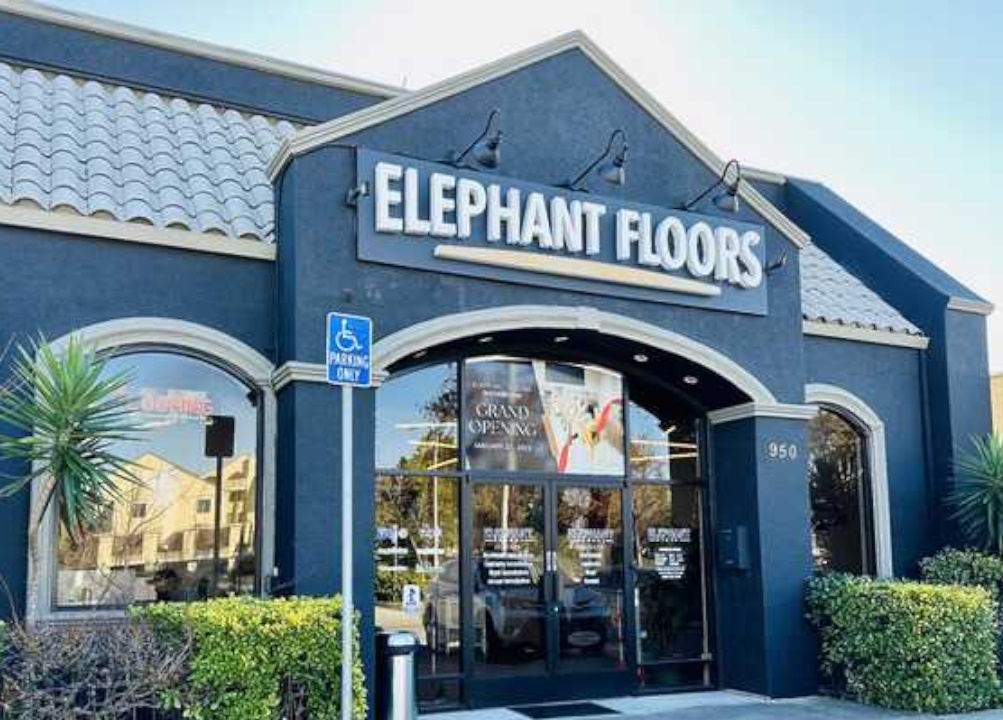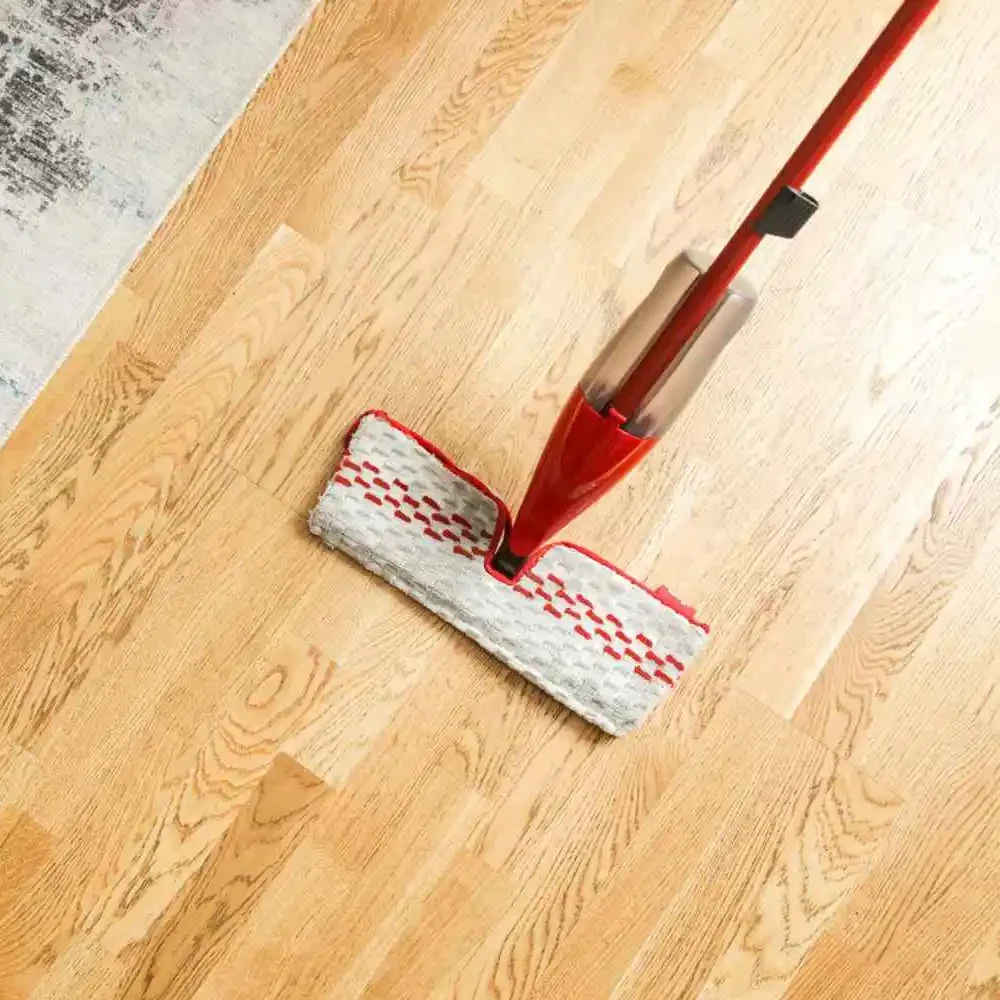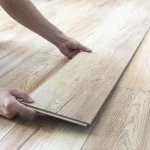- October 23, 2024
To deep clean hardwood floors, sweep or vacuum to remove debris, mop with a damp microfiber cloth using a pH-balanced wood cleaner or a vinegar-water solution, rinse if necessary, and dry with a soft cloth.
Clean hardwood floors are a challenge in households with children, pets, or high traffic. A deep clean not only restores their shine but also extends their life. Here’s a step-by-step guide with 10 effective methods, considering various situations and their specific needs.
Maintaining the beauty of hardwood floors can be a rewarding yet challenging task. Over time, dirt, grime, and stains can accumulate, dulling the natural shine and potentially damaging the wood. Deep cleaning your hardwood floors enhances their appearance and extends their lifespan. In this guide, we’ll explore how to deep clean hardwood floors, offering step-by-step instructions tailored to various household situations. Whether you’re tackling spills from little ones, pet messes, or the daily wear and tear of high traffic, you’ll find effective methods to restore your floors to their former glory. Let’s dive in and discover how to keep your hardwood floors looking their best!
Why Deep Clean Hardwood Floors?
Regular maintenance helps prevent scratches, dirt buildup, and allergens. Deep cleaning addresses tougher stains and grime, ensuring your floors look their best.
1. Preserve Aesthetic Appeal
Over time, dirt, dust, and grime accumulate on hardwood floors, dulling their shine and natural beauty. A deep clean revitalizes the surface, restoring its original luster and the overall look of your home.
2. Prevent Damage
Regular deep cleaning helps remove abrasive particles that can scratch and damage the finish of your hardwood floors. By keeping the surface clean, you can prevent costly repairs.
3. Eliminate Allergens
Dust, pet dander, and allergens can become trapped in the crevices of hardwood floors. Deep cleaning removes these particles, contributing to a healthier indoor environment and reducing allergy symptoms for sensitive individuals.
4. Remove Stains and Odors
Spills from food, drinks, or pet accidents can lead to stubborn stains and unpleasant odors. A deep cleaning tackles these issues, preventing them from becoming permanent fixtures in your home.
5. Enhance Longevity
Regular deep cleaning extends the life of your hardwood floors. By maintaining the finish and preventing wear, you avoid the need for refinishing or replacement, ultimately saving you time and money.
6. Improve Safety
Slippery surfaces can pose a risk, especially for children and elderly individuals. Deep cleaning removes any residue and enhances traction and safety.
7. Maintain Value
Hardwood floors are a significant investment in your home. Keeping them in top condition through regular deep cleaning helps maintain their value. It makes your property more appealing. When you sell your property, proper hardwood will attract potential buyers.
How to Choose the Right Cleaning Solutions for Various Types of Hardwood and Stains
Selecting the appropriate cleaning solution for your hardwood floors is essential for maintaining their beauty and integrity. Different types of hardwood and stains require specific treatments to ensure effective cleaning without causing damage.
Here’s a guide to help you choose the right cleaning solutions based on hardwood type and stain.
1. Understand Your Hardwood Type
Each hardwood species has unique characteristics that may influence your choice of cleaning solution:
- Oak and Maple: These durable woods can handle a range of cleaners. For regular maintenance, use a pH-balanced wood cleaner or a vinegar-water solution (1 cup vinegar to 1 gallon of water).
- Cherry: Cherry wood is softer and more sensitive to harsh chemicals. Opt for a gentle, pH-neutral cleaner specifically designed for hardwood.
- Hickory and Ash: They are hard and resilient. They can tolerate commercial hardwood cleaners or a mild soap solution.
- Walnut: Like cherry, walnut is more susceptible to damage. Use a gentle cleaner and avoid ammonia-based solutions.
- Teak: Known for its natural oils, teak floors benefit from oil-based cleaners that nourish the wood while providing a deep clean.
2. Identify the Type of Stain
Understanding the nature of the stain is crucial for choosing the right cleaning method:
- Water Stains: A mixture of baking soda and water removes white rings from water spills. Apply gently with a soft cloth, then wipe clean.
- Food and Beverage Stains: A solution of mild soap and warm water works well for sticky residues or spills. Avoid soaking the wood.
- Pet Urine: Enzyme-based cleaners are effective for organic stains and odors. Look for products specifically designed for pet messes.
- Grease or Oil: Use a mixture of vinegar and water, or a commercial degreaser suitable for wood surfaces. Apply sparingly and wipe clean immediately.
- Dirt and Grime: A damp microfiber mop with a wood floor cleaner or vinegar-water solution is ideal for everyday cleaning.
3. General Cleaning Solutions
Here are some cleaning solutions suitable for various hardwood types:
Type of Cleaning Solution | Best for | Notes |
Ph-balanced wood cleaner | All hardwood types | Safe and effective for regular use. |
Vinegar and water | Light cleaning, mild stains | Use diluted to avoid damage. |
Mild soap and water | Everyday cleaning | Safe for most hardwoods. |
Enzyme-based cleaner | Pet stains and odors | Effective for organic stains. |
Commercial degreasers | Grease and oil stains | Ensure it’s wood-safe. |
4. Tips for Application
- Test First: Always test any new cleaner on a small area to ensure it doesn’t cause discoloration or damage.
- Avoid Harsh Chemicals: Stay away from bleach, ammonia, or any harsh solvents that can strip finishes or harm the wood.
- Use the Right Tools: Opt for microfiber mops and soft cloths to prevent scratching. Avoid scrubbing pads that can damage the finish.
- Rinse Thoroughly: If using a soap solution, make sure to rinse the area with clean water to avoid residue buildup.
Step-by-Step Guide to Deep Clean Hardwood Floors
Step 1: Gather Your Supplies
Before you start, gather the following:
- Broom or vacuum with a hardwood setting
- Microfiber mop
- Buckets
- Hardwood floor cleaner or a DIY solution (like vinegar and water)
- Soft cloths or towels
- Optional: steam mop, floor polish
Step 2: Remove Furniture
Clear the area to access the entire floor. It makes cleaning more effective and prevents damage to your furniture.
Step 3: Sweep or Vacuum
Use a broom or vacuum to remove dust, dirt, and debris. Pay attention to corners and under furniture. For households with pets, consider using a vacuum designed for pet hair.
Step 4: Choose Your Cleaning Method
Select the appropriate cleaning method from the tables below.
Situation | Recommended Method | Frequency |
General Use | Damp mopping with hardwood cleaner | Weekly |
Children | Vinegar and water solution | Biweekly |
Pets | Enzyme-based cleaner | Monthly |
High Traffic | Steam mop or heavy-duty cleaner | Monthly |
Stains | Spot clean with rubbing alcohol | As needed |
Step 5: Prepare Cleaning Solution
- Mix one cup of vinegar with one gallon of warm water.
- For a store-bought cleaner, follow the instructions on the label.
Step 6: Mop the Floor
Using a damp microfiber mop, apply your cleaning solution. Avoid soaking the floor; too much water can damage wood.
Step 7: Rinse
If using vinegar, rinse with a clean, damp mop to remove residue. For commercial cleaners, check if rinsing is necessary.
Step 8: Dry the Floor
Use a soft cloth or towel to dry the floor, preventing water damage and streaks.
Step 9: Polish (Optional)
If desired, apply a hardwood floor polish for added shine. Follow the manufacturer’s instructions.
Step 10: Replace Furniture
Carefully return furniture to the room, using pads under the legs to prevent scratches.
Addressing Specific Situations
Children
Children can cause spills and scuff marks. Clean high-traffic areas and address spills immediately to prevent stains. Use non-toxic cleaners to ensure safety.
Pets
Pet hair and accidents can be problematic. Vacuum frequently and use enzyme cleaners to tackle stains and odors. Consider a more thorough cleaning every month to keep the floors looking fresh.
Also Read: What’s the most pet-friendly flooring?
High Traffic
In high traffic areas dirt and grime accumulate quickly. Use a steam mop for a deep clean, as it can lift stubborn dirt without chemicals. Implement a regular cleaning schedule to maintain appearance.
Cleaning Schedule
Task | Frequency |
Sweep or vacuum | Weekly |
Damp mop | Weekly |
Deep clean (various methods) | Monthly |
Spot clean stains | As needed |
How to Deep Clean Hardwood Floors | All Questions Answered
- How often should I deep clean my hardwood floors?
It’s recommended to deep clean hardwood floors every 1-3 months, depending on foot traffic and whether you have pets or children. Regular maintenance can reduce the need for deep cleaning.
- What cleaning solutions are safe for hardwood floors?
Use a pH-balanced wood cleaner, a vinegar-water solution (1 cup vinegar to 1 gallon of water), or a mild soap solution. Avoid harsh chemicals like bleach or ammonia, as they can damage the wood and finish.
- Can I use a steam mop on hardwood floors?
While some hardwood floors withstand steam cleaning, it is best to avoid steam mops, as excessive moisture can warp the wood. Always check the manufacturer’s recommendations before using a steam mop.
- How do I remove tough stains from hardwood floors?
For tough stains, try using a baking soda paste (baking soda mixed with a small amount of water) or a commercial enzyme cleaner for organic stains. Always test any cleaning solution in an inconspicuous area first.
- Is it necessary to rinse after mopping?
If you use a vinegar solution or certain commercial cleaners, rinsing with a clean, damp mop is advisable to remove any residue.
- What tools do I need for deep cleaning hardwood floors?
You’ll need a broom or vacuum with a hardwood setting, a microfiber mop, buckets, soft cloths, and your chosen cleaning solution. Optional tools include a steam mop and floor polish.
- How do I protect my hardwood floors after cleaning?
To protect your floors, consider using area rugs in high-traffic areas and placing pads under furniture legs to prevent scratches. Regular maintenance will also help preserve the finish.
- What should I do if my hardwood floors are scratched?
Use a wood filler or a matching stain to blend the scratch into the floor. For deeper scratches, consider refinishing the affected area or consulting a professional.
- Are there any tips for cleaning hardwood floors with pets?
Vacuum regularly to remove pet hair and dirt, and clean up accidents promptly using enzyme-based cleaners specifically designed for pet stains. If you have pets, consider more frequent deep cleans.
- Can I use furniture polish on my hardwood floors?
Avoid using furniture polish on hardwood floors, as it can leave a slippery residue and may lead to buildup over time. Stick to wood-specific cleaners for the best results.
Conclusion
Deep cleaning of hardwood floors is vital for maintaining their beauty and longevity, especially in homes with children, pets, or high traffic. By following the step-by-step guide outlined in this article, you can effectively restore the shine and integrity of your floors.
Key Steps for Deep Cleaning Hardwood Floors:
- Gather Your Supplies: Ensure you have all the tools and cleaning solutions.
- Remove Furniture: Clear the area for easier access and thorough cleaning.
- Sweep or Vacuum: Remove dust, dirt, and debris to prevent scratching during mopping.
- Choose Your Cleaning Method: Select the appropriate method based on your household situation.
- Prepare Cleaning Solution: Mix your chosen solution, whether vinegar water or a commercial cleaner.
- Mop the Floor: Use a damp microfiber mop, avoiding excess water.
- Rinse: Remove any residue from your cleaning solution.
- Dry the Floor: Wipe with a soft cloth to prevent water damage.
- Polish (Optional): Apply a polish for added shine if desired.
- Replace Furniture: Return furniture carefully, using pads to protect the floor.
Why Deep Clean?
- Preserve Aesthetic Appeal
- Prevent Damage
- Eliminate Allergens
- Remove Stains and Odors
- Enhance Longevity
- Improve Safety
- Maintain Value
For anyone looking to upgrade their flooring or explore high-quality options, consider Elephant Floors. Their wide range of durable and stylish flooring solutions can transform your home while ensuring lasting performance.
Visit Elephant Floors today to explore their exceptional collection and elevate the beauty of your living space!




